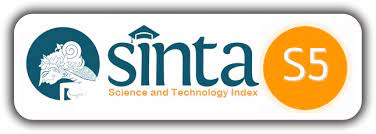Peer Review policy
Bali Tourism Journal maintains a high standard of academic integrity through a double-blind peer review system, where the identities of both authors and reviewers remain confidential throughout the process to ensure impartiality and fairness, as displayed by the illustration below:

1. Submission Guidelines for Double-Blind Peer Review
To support this process, authors must carefully prepare their manuscripts to avoid disclosing any identifying information. When submitting to Bali Tourism Journal, please follow these instructions:
- Submit two separate files:
- A Blinded Manuscript (without any author details)
- A Title Page (containing author names, affiliations, corresponding author’s contact information)
Blinded Manuscript Preparation Tips:
- Use third-person references for self-citations (e.g., “...has been shown [Anonymous, 2005]” instead of “...as we have shown”).
- Ensure that figures, tables, and file names do not contain identifying information or institutional logos.
- Do not include acknowledgments or funding sources.
- In the reference list, cite own works as: “[Anonymous 2007] Information withheld for double-blind reviewing.”
- Remove author metadata from the document properties.
2. Initial Evaluation
Each submitted manuscript undergoes an initial screening by the editorial team to assess its relevance to the journal’s aims and scope, language quality, and adherence to submission guidelines, especially those related to anonymization.
3. Peer Review Stage
Manuscripts that pass the initial screening are reviewed by at least two independent experts in the field. Reviewers assess submissions based on:
- Originality
- Methodological rigor
- Scholarly significance
- Clarity and structure
Reviewers are encouraged to use standardized evaluation tools, such as the Publons Reviewer Guidelines or other discipline-specific checklists, to guide their assessments.
Authors are typically given 7 days to respond to reviewer comments. A second round of review may follow to confirm that necessary revisions have been made. The overall review period ranges from 4 to 6 weeks.
4. Editorial Decision
The Editor-in-Chief makes the final decision on publication based on the reviewers’ recommendations. Accepted manuscripts will go through final proofreading and layout editing. Authors must approve the final version before publication.
We strictly follow the COPE Ethical Guidelines for Peer Reviewers and expect all reviewers to maintain confidentiality and objectivity throughout the process.



